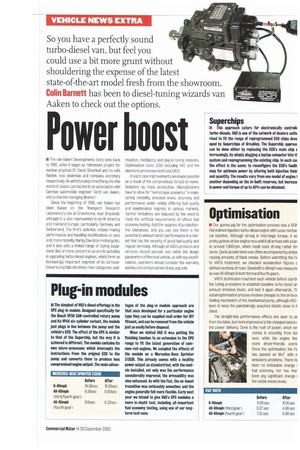Optimisation
Page 17

If you've noticed an error in this article please click here to report it so we can fix it.
le Our guinea pig for the optimisation process was a 100h Fiat indirect-irdection turbo-diesel engine with Lucas medlar cal injection. Although strong in mid-range torque, it wa pretty gutless at low engine revs until it all arrived with a bar at around 1,900rpm, which made town driving rather tin some. Quick acceleration was often accompanied by emba rassing amounts of black smoke. Before submitting the Ft to VAD's treatment, we checked acceleration figures c defined sections of road. Standstill to 60mph was measure' as was 40-60mph in both third and fourth gears.
VAD's technicians road-test each vehicle before startir the tuning procedure to establish baseline turbo boost an exhaust emission levels, and test it again afterwards. Th actual optimisation process involves changes to the on-boo fuelling mechanism of the mechanical pump, aithough VAD keen to keep the painstakingly acquired details close to it chest.
The straight-line performance effects are clear to se from the table, but more impressive is the changed nature (
the power delivery. Gone is the rush of power, which no comes in smoothly from ticl over, while the engine fee more driver-friendly overa Since the optimisation the HE has passed an MoT with n emissions problems. There ha been no noticeable change i fuel economy, nor has ther been any significant change i the visible smoke levels.




































































































